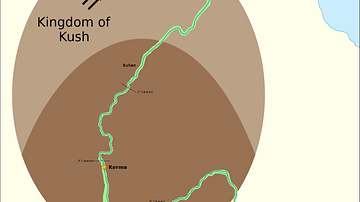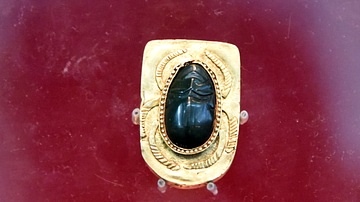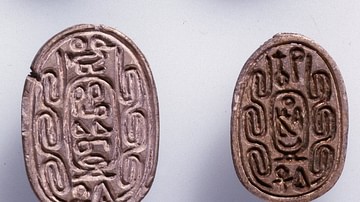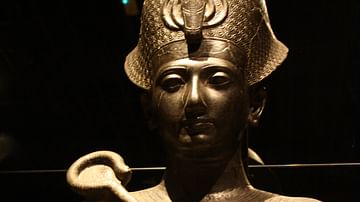Illustration
This is one of just a few surviving royal statues from the late Second Intermediate Period, when southern Egypt was ruled from Thebes. Two of its kings had the birth name of Sobekemsaf, but their order and chronological potions remain disputed. Sculpture from this period is often crude and highly stylized, a faint echo of masterpieces created two centuries earlier. The King's waist, for instance, is much too narrow. However, his eyes received exceptional attention. Dowel holes in the brows and cosmetic lines helped to secure inlaid eyes and as well as overlays. The pupils, for instance, were probably made of rock crystal or obsidian. The back of the throne bears an inscription which invokes protection for the king, flanked by the figures of the hippopotamus goddess Ipi. Her appearance on an official monument is unusual. Ipi's usual place was on objects designed to ward off evil, such as magical wands. Her presence here may reflect the uncertainties of the time, even when Egypt's independence was curbed by the Hyksos in the north and by Kush in the south. Late 16th or early 17th Dynasties, circa 1600 BCE. From the temple of Amun-Ra at Thebes, Karnak, Egypt. (The British Museum, London).
About the Author
Cite This Work
APA Style
Amin, O. S. M. (2016, July 21). Statue of King Sobekemsaf I or II. World History Encyclopedia. Retrieved from https://www.worldhistory.org/image/5382/statue-of-king-sobekemsaf-i-or-ii/
Chicago Style
Amin, Osama Shukir Muhammed. "Statue of King Sobekemsaf I or II." World History Encyclopedia. Last modified July 21, 2016. https://www.worldhistory.org/image/5382/statue-of-king-sobekemsaf-i-or-ii/.
MLA Style
Amin, Osama Shukir Muhammed. "Statue of King Sobekemsaf I or II." World History Encyclopedia. World History Encyclopedia, 21 Jul 2016. Web. 12 Apr 2025.








